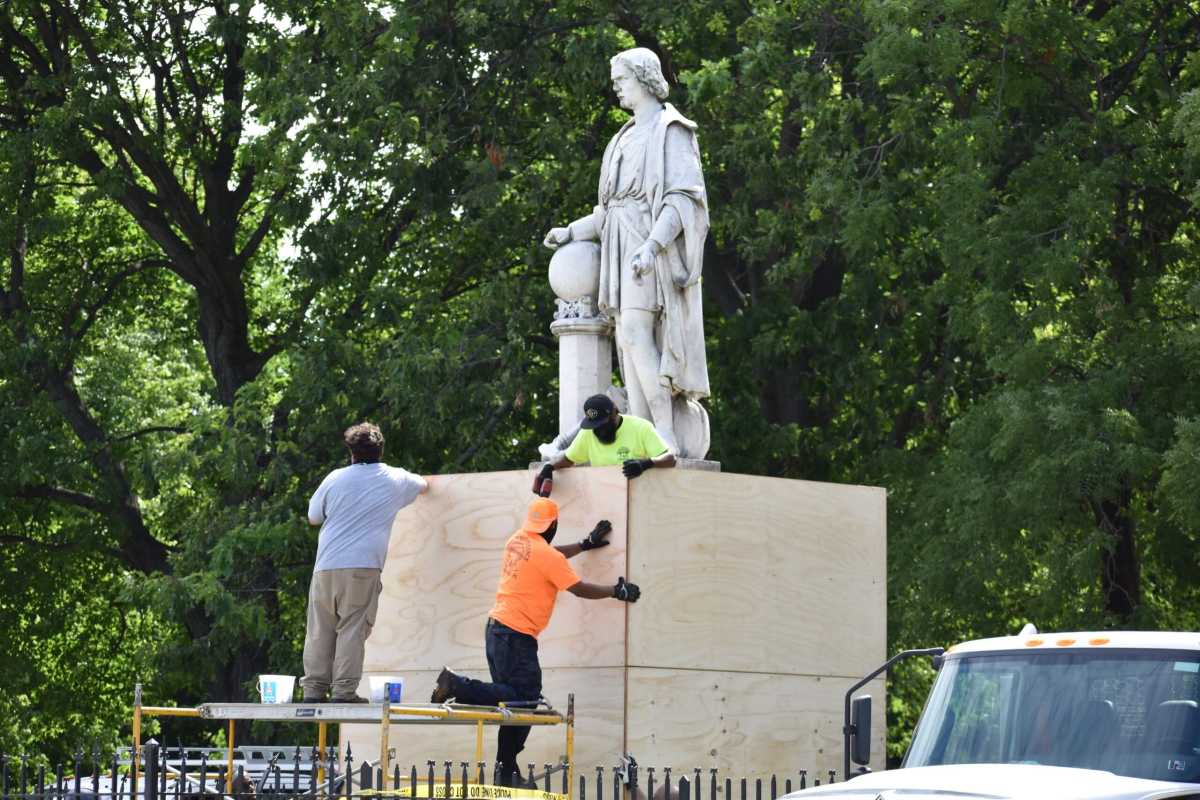The slur was worse than the punch.
Mel D. Cole, a well-known hip-hop photographer, came to South Philadelphia Tuesday to document protests.
After following a march from Broad Street and Snyder Avenue to City Hall, he circled back to Marconi Plaza, where tensions were again high as a group gathered to “protect” a statue of Christopher Columbus.
Minutes later, cops lined up to keep the pro-Columbus contingent and counter-protesters apart.
“It was like all hell broke loose,” Cole, who is based in New York, told Metro. “It was like a scene from a movie that I’ve seen from the ’60s.”
A man in a red Phillies shirt sucker-punched Cole after saying, “Get out of here, boy,” several times. Cole, who is Black, caught the exchange on camera and posted the video on Instagram.
“Being called a ‘boy,’ I mean, you might as well just call me a nigger and just get it over with,” he said.
“It was something that will affect me for the rest of my life mentally,” Cole added.
Calling a Black man a boy is a longstanding racial slur that dates at least as far back as the Jim Crow era. Cole said it’s the first time the epithet has been used against him.
He said he was hit in the jaw but not injured.
Prosecutors say the man in the Phillies shirt was 58-year-old John Mooney, and authorities charged him on Wednesday with ethnic intimidation, simple assault, reckless endangerment and harassment.
District Attorney Larry Krasner related the punch to incidents involving violent white vigilantes that have cropped up alongside protests against police brutality following the death of George Floyd in Minneapolis.
Last week, a cameraman from a left-wing media outlet was allegedly assaulted by Columbus supporters at Marconi Plaza. Fights broke out periodically before city workers constructed a wooden box around the statue last week.
Bat-wielding men gathered in Fishtown earlier this month to guard a police station, and a WHYY producer said a group of them attacked him.
“Anti-racism protesters and journalists have been verbally and physically assaulted, in direct view of law enforcement officers who have— by the numbers—made far more arrests of protesters and journalists than they have of these bat-wielding, assaultive, and threatening individuals,” Krasner said in a statement.
The reform-minded DA has repeatedly clashed with the police union, Fraternal Police Lodge 5, whose leadership lashed out at him after his office charged Staff Inspector Joseph Bologna with felony assault.
Cole said officers at the scene lined up with their backs toward the pro-Columbus crowd, a sign that they viewed the smaller group of anti-racism protesters as a bigger threat. Officers did nothing to reign in antagonists or discourage open consumption of alcohol, he said.
After being punched, Cole said he wanted to give a statement and file a police report, but many officers on the scene weren’t interested.
“Several police officers didn’t even bother looking me in the eye, let alone want to talk to me,” Cole said. “One police officer said to me, ‘Yeah, what do you expect? These people come in their neighborhood and want to do stuff.’”
Eventually, an officer did listen to him, and he went to a nearby police station to give his account of what happened.
“These incidents continue to raise serious questions about policing and unequal application of the law in the City of Philadelphia,” Krasner said, in announcing charges against Mooney.
In related news, Mayor Jim Kenney’s administration on Wednesday announced its intention to ask the Philadelphia Art Commission at a meeting next month for approval to remove the Columbus statue.
“In recent weeks, clashes between individuals who support the statue of Christopher Columbus in Marconi Plaza and those who are distressed by its existence have deteriorated—creating a concerning public safety situation that cannot be allowed to continue,” Kenney said in a statement.
The commission is gathering feedback on the future of the statue through an online form. Residents will also have an opportunity to testify at the meeting on July 22, the Mayor’s Office said.
Kenney initiated a public process over the statue’s future June 15, but, at that time, his administration had yet to take a stance on its removal.




























